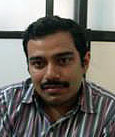Dear Editor
Kumar et al. have addressed a fundamental national health concern in India, neonatal mortality1. We would like to widen awareness of this issue among the medical scientific community by further highlighting steps taken by the Government of India to curb the existing high rate of neonatal mortality.
First, however, we would like to add the following comments. In our opinion, the Indian neonatal mortality rate (NMR) has not been adequately distinguished from the infant mortality rate (IMR). The current NMR is approximately 44/1000 live births, accounting for almost two-thirds of infant mortality and one-half of under-5 years mortality2. The NMR is also one and a half times higher in rural areas than in urban areas3. However, there is scientific evidence to suggest that NMR, and hence IMR, can be significantly reduced by higher literacy (especially female literacy) and better primary healthcare services4.
The National Neonatology Forum has contributed by undertaking country-wide training programs in neonatal care. In addition, the Reproductive and Child Health Programme II (RCH-II), Integrated Management of Childhood Illness (IMCI) and Integrated Management of Neonatal and Childhood Illness (IMNCI), as well as the broader Indian National Rural Health Mission launched in 2005, all aim to achieve a further, significant reduction in the IMR, especially in the high IMR belt that traverses the states of Orissa, Madhya Pradesh, Assam, Bihar, Uttar Pradesh, Haryana and Rajasthan5. While it is heartening that the Government of India has responded by launching various programs to improve neonatal care6, it is clear that to make an impact in these states, specific components of ante-natal, intra-natal and post-natal services must be strengthened. Such services include the promotion of timely and adequate infant immunization, growth monitoring, care during diarrhoea and acute respiratory infections, and adequate breast-feeding and weaning supervision. To achieve this goal, the existing primary healthcare system must be made more accountable.
In addition to infant services, it is necessary to upgrade mother-care and family welfare services, because the age of the mother at childbirth, family size, birth order and birth spacing all have a profound influence on IMR. The Deccan Herald7 recently reported progress in the reduction of India's child mortality rate, with an average fall of approximately 2.6% between 1990 and 2006. However, if India is to reach the Millennium Development Goals set by the UN, the average annual rate of reduction over the next 9 years should be approximately 7.6%. We certainly hope this proves to be achievable.
B Suresh Kumar Shetty, MBBS, MD
Assistant professor
Department of Forensic Medicine
Kasturba Medical College
Mangalore, India
Ganesh S Kamath, MBBS
Postgraduate trainee
Department of Paediatrics
Kasturba Medical College
Mangalore, India.
Ritesh G Menezes, MBBS, MD
Assistant professor
Department of Forensic Medicine
Kasturba Medical College
Mangalore, India
PP Jagadish Rao, MBBS, MD
Assistant professor
Department of Forensic Medicine
Kasturba Medical College
Mangalore, India
References
1. Kumar D, Verma A, Sehgal VK. Neonatal mortality in India. Rural and Remote Health 7: 833. (Online)2007. Available: http://www.rrh.org.au (Accessed 8 February 2008).
2. Government of India. Annual Report 2006-2007. Delhi: Ministry of Health and Family Welfare, Government of India, 2007.
3. Government of India. National population policy - India (2000): National socio-demographic goals for 2010. (Online) 2000. Available: http://populationcommission.nic.in/npp_obj.htm#box2 (Accessed 1 November 2007).
4. UNICEF. State of the World's Children. Geneva: UNICEF, 2007.
5. Dasgupta R, Qadeer I. The National Rural Health Mission: a critical review. Indian Journal of Public health 2005; XXXXIX: 138-140.
6. Singh B. Infant mortality rate in India: still a long way to go. Indian Journal of Paediatrics 2007; 74: 454.
7. Deccan Herald News Service. Child survival in India still concern. (Online) 2008. Deccan Herald. Available: http://www.deccanherald.com/Content/Jan232008/national2008012248079.asp (Accessed 8 February 2008).



